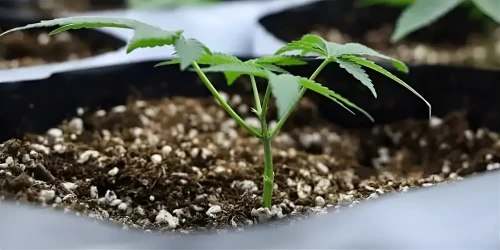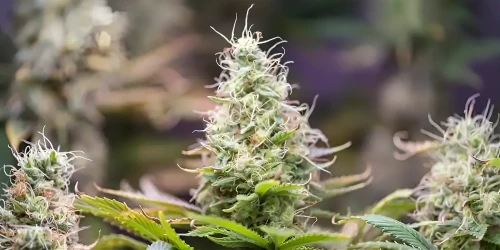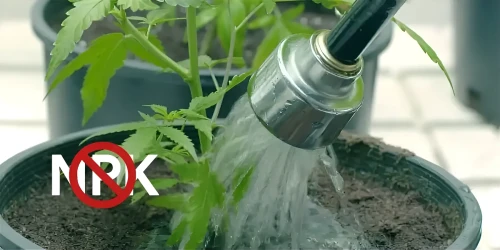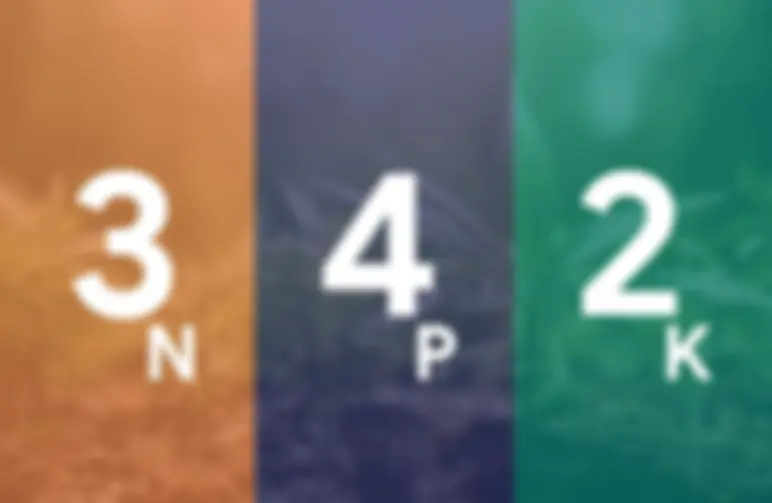If you're serious about growing cannabis, you know how important it is to give your plants the right nutrients. And when it comes to nutrients, understanding NPK ratios can mean the difference between a mediocre harvest and an abundant one.
You might have heard that the 3-4-2 ratio is best for growing cannabis seeds, but that’s not quite the case. To grow strong plants and get the best buds from those seeds, you need to tailor your nutrient mix to the plant’s growth stage.
In this guide, we’ll break down why higher nitrogen is essential for vegetative growth and how to adjust your feeding for the different phases of flowering. Let’s dig in!
What is NPK and Why Does it Matter?
Let’s start with the basics: NPK refers to the three key nutrients that plants need to thrive:
- Nitrogen (N): Crucial for leafy growth. It helps your plant produce chlorophyll, which powers photosynthesis and drives overall growth.
- Phosphorus (P): Supports root development and flower production. It’s essential for energy transfer within the plant, helping it build buds.
- Potassium (K): Enhances functions like water regulation, nutrient absorption, and disease resistance. It plays a big role in the final stages of flowering.
The balance of these nutrients changes depending on whether your plant is growing leaves and stems or shifting into flower production.

The Vegetative Stage: Why Nitrogen is King
In the vegetative stage, cannabis is all about building a strong foundation. Your plants focus on growing leaves, stems, and roots, and for that, they need a lot of nitrogen. Nitrogen fuels leafy growth, which is critical for photosynthesis. More leaves mean more energy for the plant.
That’s why a nutrient mix with a higher nitrogen content is ideal during this stage. You’ll still need phosphorus and potassium but in smaller amounts compared to nitrogen. The right balance here encourages your plant to grow tall, bushy, and ready to support heavy buds later.
Best NPK Ratios for Vegetative Growth
For this stage, look for NPK ratios like:
- 4-2-3
- 5-1-1
- 3-1-2
These ratios prioritize nitrogen while ensuring the plant gets enough phosphorus and potassium to develop strong roots and remain resilient.
How to Feed During Vegetative Growth
- Start Early: Begin feeding your plants a high-nitrogen mix a few weeks after they sprout. This is when they need nitrogen the most to fuel their leafy growth.
- Monitor Growth: Check your plants regularly. Are the leaves green and healthy? Are the stems thick and sturdy? If the plants are growing well, your feeding schedule is on point. Yellowing leaves or slow growth could indicate they need more nitrogen.
- Adjust as They Grow: As your plants approach the flowering stage, start to reduce nitrogen and prepare to boost phosphorus and potassium.

Flowering Stage: Shifting Nutrients for Bud Development
Once your plants start flowering, it’s time to change up their nutrient needs. The focus shifts from growing leaves and stems to developing buds, and that means less nitrogen and more phosphorus and potassium.
Let’s break it down by stage.
Early Flowering Stage (Weeks 1-3)
During early flowering, your plants are transitioning. They still need some nitrogen to support any remaining vegetative growth, but phosphorus and potassium are becoming more important for flower production. This is when buds start to form, and you want to give the plant what it needs to set the stage for healthy flowers.
Best NPK Ratios for Early Flowering:
- 2-3-3
- 1-3-2
- 2-4-4
These ratios ensure your plants have enough phosphorus to kickstart bud development while maintaining healthy foliage with a touch of nitrogen.
Mid Flowering Stage (Weeks 4-6)
By the middle of the flowering stage, your plants are in full bloom. Now, nitrogen should be kept to a minimum, as too much can hinder flower growth and lead to excessive leafiness. Instead, the focus shifts almost entirely to phosphorus and potassium to fuel bud development and keep the plant healthy.
Best NPK Ratios for Mid Flowering:
- 1-3-2
- 1-4-5
- 0-3-3
These ratios boost phosphorus and potassium to encourage dense, potent buds while keeping nitrogen low to avoid unwanted vegetative growth.
Late Flowering Stage (Weeks 7-10+)
In the final weeks before harvest, your cannabis plants are focused on ripening their buds and producing the best possible cannabinoids and terpenes. Nitrogen should be nearly eliminated at this point, as it can delay flowering and reduce the overall quality of your harvest.
Phosphorus and potassium, on the other hand, remain critical.
Best NPK Ratios for Late Flowering:
- 0-4-5
- 0-3-6
- 0-5-7
These ratios focus entirely on phosphorus and potassium to finish off bud development, ensuring your flowers are dense, flavorful, and potent.

The Final Flush
As your plants are near harvest, usually in the last one or two weeks, you’ll want to perform a flush. This involves feeding your plants only water (or a flushing agent) to clear out any remaining nutrients. Flushing improves the flavor and aroma of your buds, making for a smoother, tastier final product.
Common Feeding Mistakes to Avoid
Even if you’re using the right NPK ratios, things can still go wrong. Here are some common pitfalls to watch out for:
- Overfeeding: Too much of any nutrient can cause nutrient burn, especially nitrogen during flowering. Stick to recommended dosages and adjust if you notice signs of overfeeding, like yellow or brown leaf tips.
- Ignoring pH: NPK nutrients only work if your plant can absorb them, and that depends on maintaining the correct pH. For soil, aim for a pH between 6.0 and 7.0. For hydroponics, keep it between 5.5 and 6.5.
- Not Adjusting to Growth Phases: Don’t stick to the same nutrient mix throughout the grow. Your plants’ needs change as they move from vegetative growth to flowering, so make sure to decrease nitrogen and increase phosphorus and potassium as they develop.
Final Thoughts
Mastering NPK ratios is essential for growing cannabis successfully. During the vegetative stage, focus on nitrogen to build strong, leafy plants. Once flowering begins, gradually reduce nitrogen and increase phosphorus and potassium to fuel bud development.
By adjusting your feeding schedule to match each stage, you’ll set your plants up for a healthier grow and a bigger, better harvest.
Happy growing, and may your buds be dense!





